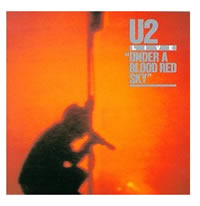One of the great advantages of working for MediaNews Group Interactive is that our office, on the 9th floor of the same building that houses both the Denver Post, which we own, and the Rocky Mountain News, is that we have a terrific view. Located at the corner of Broadway St. And Colfax Ave., our building overlooks Civic Center Park, which is surrounded by us, the City and County Building, the Denver Art Museum and Denver Public Library complex, and the gold-topped Colorado State Capitol. Off in the distance to the west beyond the City and County Building rise the mellow foothillas and then the already-snow-dusted Rocky Mountains. With the sun shining and the air crisp with early fall — a rarity here, since fall is often skipped in the rush from summer to winter — it’s easy to remember why we love living in Colorado so much.
Today, the view off our 9th floor balcony of Civic Center Park showed some event going on. The summertime Farmers Markets had already stopped, and beside, they were held on Wednesdays and this was Thursday. You could hear the amplified sounds of music wafting up off street level, though, and a weird-looking tower was spitting out soap bubbles. There was a large, colorful peace sign drawn on the grass of the park, so I figured it must be an anti-war demonstration of some sort.
During lunch, I wandered downstairs and crossed the street to check it out. It turned out to be a peace-and-art event, and a celebration of the late musician-activist-Beatle John Lennon’s birthday. Lennon was born in Liverpool, England on Oct. 9, 1940. Continue reading





 I know exactly where I was the night of June 5, 1983: I was freezing my butt off, soaked to the bone but ignoring my discomfort because I was in musical heaven, surrounded by huge sandstone rocks on both sides, a stormy sky above and a hungry young band called U2 just hitting its stride in front of me, its members playing their hearts out despite the crappy weather.
I know exactly where I was the night of June 5, 1983: I was freezing my butt off, soaked to the bone but ignoring my discomfort because I was in musical heaven, surrounded by huge sandstone rocks on both sides, a stormy sky above and a hungry young band called U2 just hitting its stride in front of me, its members playing their hearts out despite the crappy weather. 






